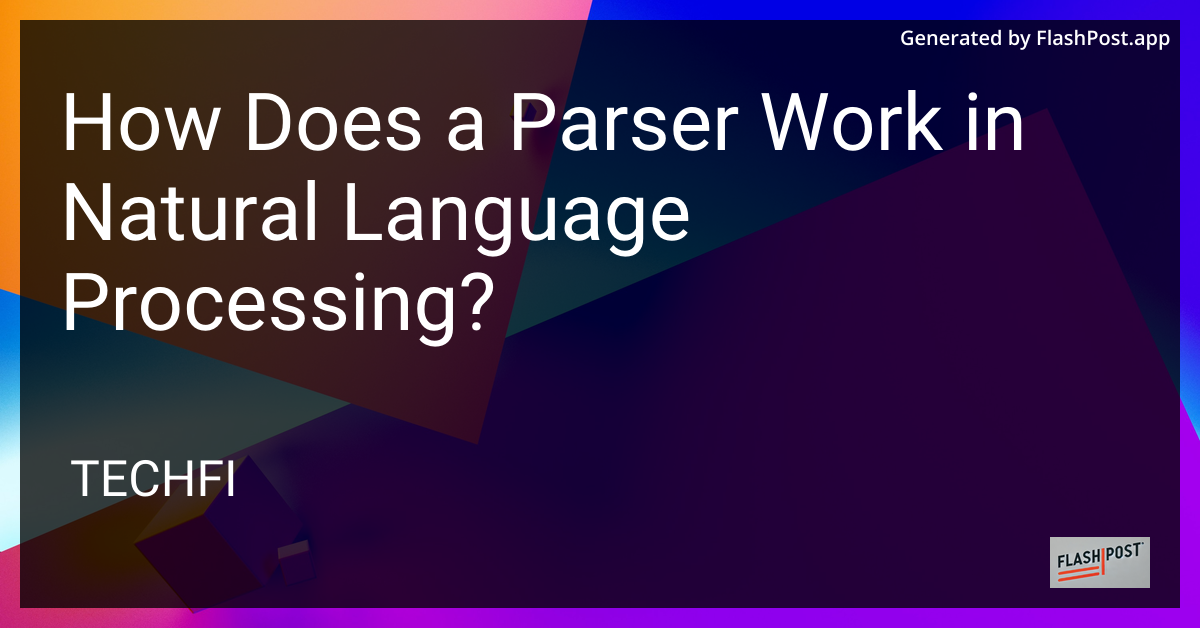How Does a Parser Work in Natural Language Processing?

In the realm of Natural Language Processing (NLP), a parser plays a pivotal role in understanding and interpreting human language. Whether you're interested in creating chatbots, translating languages, or conducting sentiment analysis, understanding how a parser works is essential. This article delves into the intricacies of parsers in NLP, shedding light on their workings, types, and applications.
What is a Parser?
A parser is a software component that interprets and converts data—such as text—into a format that can be easily understood and manipulated by a computer. Essentially, it breaks down text into its syntactic components, allowing further linguistic analysis or processing. In NLP, a parser analyzes the grammatical structure of sentence inputs, facilitating deeper language understanding.
How Parsers Work in NLP
Parsers in NLP work by processing sentences to determine their grammatical structure. This involves several steps, including:
- Tokenization: Breaking down a sentence into words or phrases.
- Morphological Analysis: Analyzing the structure of words to identify their parts of speech.
- Syntactic Parsing: Building a syntactic structure or parse tree of the sentence based on grammar rules.
- Semantic Parsing: Assigning meanings to the syntactic structures.
Each of these steps is crucial for tasks like question answering, machine translation, and sentiment analysis.
Types of Parsers in NLP
There are primarily two types of parsers used in NLP:
Dependency Parsers: These parsers focus on the syntactic structure of a sentence by establishing relationships between words. They identify the headwords and their dependents, thereby constructing a parse tree representing word dependencies.
Constituency Parsers: Also known as phrase-structure parsers, they analyze sentences by breaking them down into sub-phrases or constituents. This type uses a hierarchical parse tree to represent syntactic structures, which can be useful in understanding the nested structures within sentences.
Applications of Parsers in NLP
Parsers find applications in numerous NLP tasks, including:
- Machine Translation: Translating text from one language to another.
- Speech Recognition: Converting spoken language into text.
- Text Summarization: Producing concise summaries from larger text bodies.
- Sentiment Analysis: Determining sentiment expressions in text data.
- Chatbots: Providing human-like conversation responses.
By understanding syntactic structures, parsers enhance the accuracy and effectiveness of these NLP tasks.
Learning More About Parsing
For those looking to delve deeper into parsing techniques, here are some resources:
- Parsing techniques using regex for simple tasks.
- Parsing SQL results in PowerShell.
- Parsing JSON in Presto for handling semi-structured data.
- PowerShell integer parsing for data type conversions.
- Prolog parsing techniques for advanced language processing tasks.
These resources can provide further insights into practical parsing applications across various programming contexts.
Conclusion
Understanding how parsers work is fundamental for anyone venturing into the world of Natural Language Processing. By converting complex text into structured formats, parsers unlock the potential for computers to process human language effectively. As NLP continues to evolve, technology professionals must remain acquainted with parsing advancements to keep up with the growing demands for language processing capabilities. ```